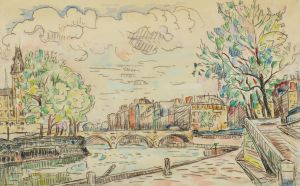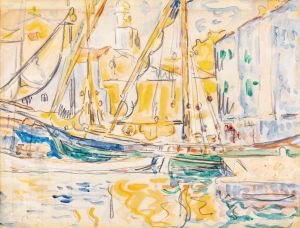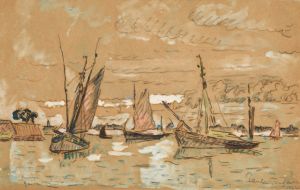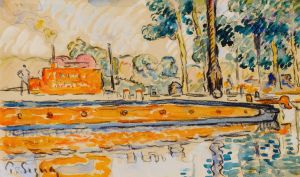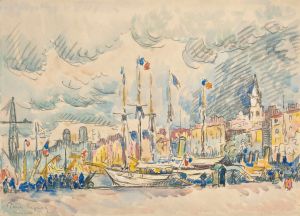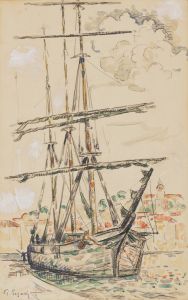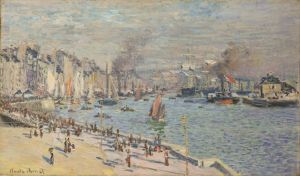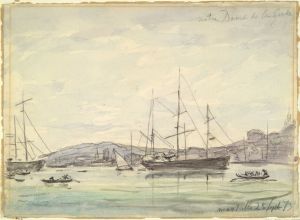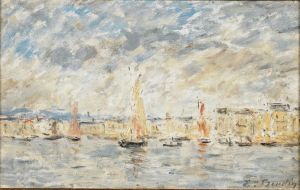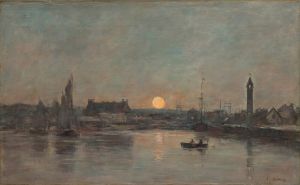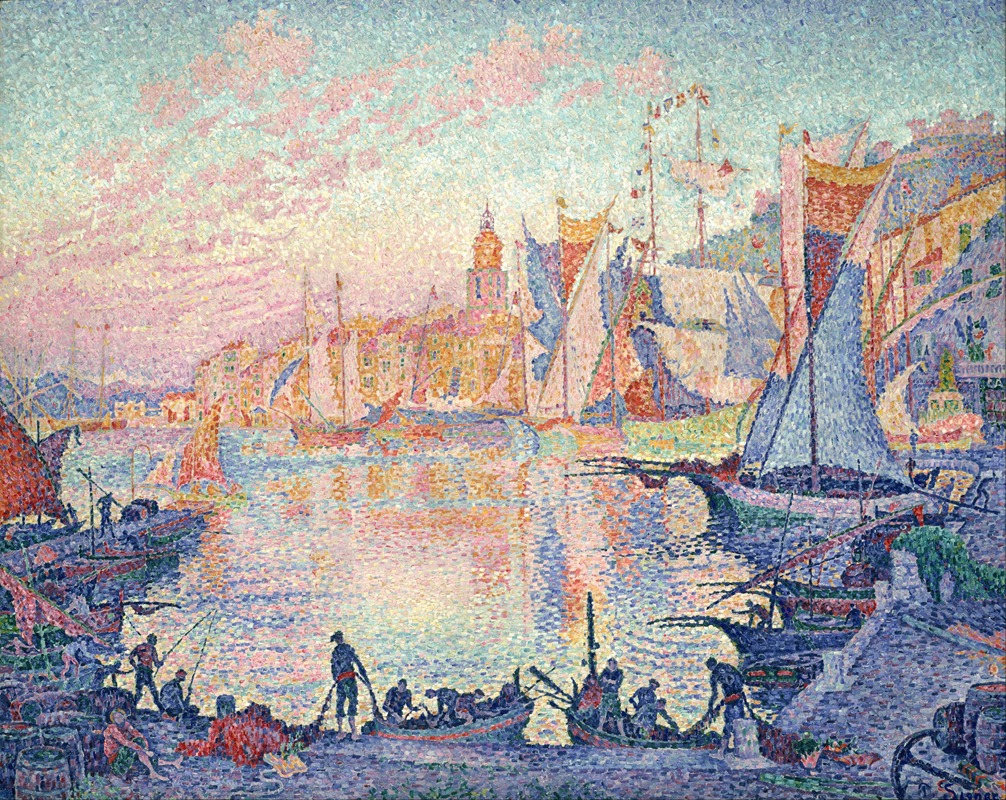
The Port of Saint-Tropez
A hand-painted replica of Paul Signac’s masterpiece The Port of Saint-Tropez, meticulously crafted by professional artists to capture the true essence of the original. Each piece is created with museum-quality canvas and rare mineral pigments, carefully painted by experienced artists with delicate brushstrokes and rich, layered colors to perfectly recreate the texture of the original artwork. Unlike machine-printed reproductions, this hand-painted version brings the painting to life, infused with the artist’s emotions and skill in every stroke. Whether for personal collection or home decoration, it instantly elevates the artistic atmosphere of any space.
Paul Signac's "The Port of Saint-Tropez" is a notable example of the artist's mature work, showcasing his dedication to the Neo-Impressionist movement and his mastery of the pointillist technique. Painted in 1901, this artwork reflects Signac's fascination with the vibrant colors and serene landscapes of the French Riviera, particularly the picturesque town of Saint-Tropez, which became a significant source of inspiration for him.
Signac was a leading figure in the Neo-Impressionist movement, which emerged in the late 19th century as a response to the Impressionist style. Alongside Georges Seurat, Signac developed the technique of pointillism, a method of painting in which small, distinct dots of color are applied in patterns to form an image. This technique was based on contemporary theories of color and optics, aiming to achieve greater luminosity and vibrancy in paintings.
"The Port of Saint-Tropez" exemplifies Signac's use of pointillism, with its meticulous application of color dots that blend optically to create a harmonious and lively scene. The painting captures the essence of the port town, with its bustling harbor, colorful boats, and the shimmering Mediterranean Sea. Signac's choice of bright, contrasting colors reflects the intense sunlight and the vivid atmosphere of the region, conveying a sense of tranquility and joy.
Saint-Tropez, a small fishing village at the time, became a popular destination for artists and writers in the late 19th and early 20th centuries. Signac first visited the town in 1892 and was immediately captivated by its charm and beauty. He eventually purchased a house there, which became a gathering place for other artists, including Henri Matisse and Pierre Bonnard. The town's unique light and landscape provided endless inspiration for Signac, who produced numerous works depicting its various aspects.
In "The Port of Saint-Tropez," Signac's composition is carefully structured, with the harbor forming a central focal point. The painting's balance and rhythm are achieved through the arrangement of boats, water, and sky, creating a sense of movement and harmony. The use of pointillism allows for a dynamic interplay of colors, enhancing the overall vibrancy of the scene.
Signac's work in Saint-Tropez marked a significant period in his artistic career, as he continued to explore the possibilities of color and form. His paintings from this time are celebrated for their innovative use of color theory and their ability to capture the essence of the Mediterranean landscape. "The Port of Saint-Tropez" remains one of his most admired works, exemplifying his contribution to the development of modern art.
Today, "The Port of Saint-Tropez" is held in high regard within the art community, appreciated for its technical precision and its ability to evoke the serene beauty of the French Riviera. Signac's legacy as a pioneer of Neo-Impressionism and his influence on subsequent generations of artists are well recognized, with this painting standing as a testament to his artistic vision and skill.





